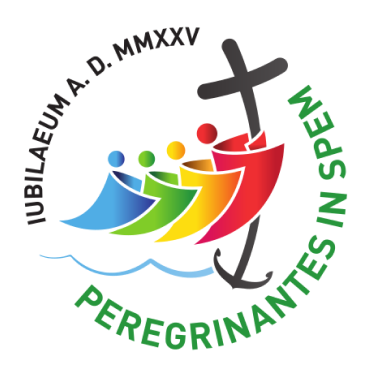The work contains some elements taken from the pages of the Gospel and others that come from the iconographic traditions of the East and the West, and is vertically marked by the revelation of God, the Holy Trinity, i.e. Father, Son and Holy Spirit, which took place at the moment of the baptism of Jesus in the River Jordan by John. Above, in a glimpse of heaven we can contemplate the figure of God the Father, dressed in white and eternal splendor, with his hand controlling the cosmos. He is surrounded by angels with their arms crossed over their hearts in a state of adoration and the love of cherubs in the form of child angels. As the eye descends, we see the Holy Spirit manifested in the form of a dove, opening the sky, like a curtain being drawn back. Immediately below, Jesus, the Son of God who became man, bends down to receive the sign of sprinkling with the water of the river, by John. Christ’s emaciated body shows the signs of his ascetic life in the desert of Judea. Even John's placement in shadow reflects his background role compared to the Redeemer, who is displayed in full light. As the prologue of the fourth Gospel recalls, John pointed to Christ present in the world, but John was not the light of the world, he was its witness. Christ's robes are held in the hands of angels who have come to assist: the tunic is woven with crimson red threads, the color of the main garment of the Roman and Byzantine emperors; the blue cloak covers the tunic itself, in a combination that symbolically recalls the majestic divine nature of Jesus, who is the second person of the Blessed Trinity, clad in the human nature that he assumed for love of us. The placing of the garments, physically necessary for the baptismal immersion in the waters of the river, has two further symbolic meanings. First, it expresses the humble stripping of Christ, who renounced all splendor to come to us as a friend and to take on our weakness and our death to save us. The clothes also anticipate the final stripping of Jesus on the wood of the cross, when lots were cast among the soldiers who supervised the execution of the condemned man, for his tunic, which was precious and seamlessly woven, while the cloak and sandals were divided among them. The immersion in the waters where sinners sought the purity that flows from God's merciful intervention finds an echo in Christ's immersion into his passion and death, the supreme work of divine mercy which offers everyone the possibility of true purification.
Note too that the Father, seen above, shows only one side of his face, while the Son, seen below, shows only the other, almost as if to signify that only an overall look can grasp the full revelation of the mystery of the life of God.
The environment, the sky, the clouds, as well as the earth, the rocks and the river, seem to be affected by that revelation. They are depicted with energetic strokes as the painter highlights the whole cosmos being thrown into turmoil by the entry of the Trinity into the created world. Finally, the angels present in the painting bear witness to the invisible realities that God created, together with the visible, destining his incarnate Son to be the salvation and eternal joy of both. That angels pass effortlessly from heaven to earth is one of the most recurring themes of the Baroque period, a response to the Lutheran vision and that of the other Protestant reformers who had proposed a kind of emptying of the Christian firmament and the eclipse of the cult of saints and angels, who are, in reality, our important intercessors and spiritual friends, hidden but ever close.
The famous manifestation of the Holy Spirit in the form of a dove probably refers to the book of Genesis, when the waters of the flood had erased the ugliness of the world which, after the original rupture between man and God, had progressively been disfigured by the loss of all harmony and the spread of degradation and violence. Noah and his family, together with the creatures saved in the ark, survived that universal cataclysm, waiting for the waters to slowly recede in order to leave the ark and rebuild the world and start a new life. When the tops of the mountains appeared, in a bid to find out if somewhere there was a strip of dry land, the biblical narrative says that Noah first sent out a crow, which returned to the ark without finding a place to rest, and later a dove, which the first time returned because it had found nothing but water, but a few days later returned in the evening with an olive branch in its beak and the third time it did not return at all, a sign that it had finally found a way to land on dry land which was newly emerging from the waters. When the Holy Spirit emerges from the womb of the Trinity and rests on Jesus as he emerges from the river, the sign of the dove seems to proclaim that He is the new earth from which it is possible to start rebuilding the world and new life, finally leaving behind a history degraded by sin, and the deformed existence of creatures who had tried to live and be happy without their Creator.




















